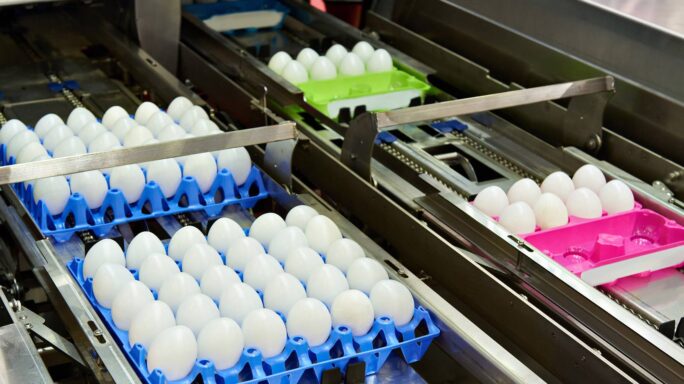Money Matters
How ERP Helps Food and Beverage Manufacturers Keep Formulas Fixed
For food and beverage manufacturers, consistency is critical for multinational market success. Here's how the right ERP can help.

According to data from the Government of Canada, the food and beverage processing industry is the second-largest manufacturing industry in the country — in 2019 alone, food and beverage manufacturers generated sales of more than $117 billion, or 17 percent of total manufacturing sales.
2020 changed all that; while many industries were hard-hit by the pandemic, food and beverage companies faced the dual challenge of supply chain disruptions and front-line frustrations as supply lines dried up — even as many restaurants and other food purchasers shuttered their doors. Now, the sector is beginning a slow restart as operating conditions around the globe have begun to stabilize. To help combat the challenge of potential future food and beverage disruptions, many companies have chosen to diversify operations either by bringing back some portion of their manufacturing process to Canada or opening new sites in other countries that are geographically closer to key supply sources.
The challenge? Consistency. Ensuring that food and beverage formulas are consistent across operations worldwide to deliver on both evolving consumer expectations of quality and emerging regulatory rulings around transparency.
Recipes, Risk and Regulations
As noted by New Food Magazine, one of the biggest challenges for food and beverage companies post-COVID is safety. This includes both the safety of workers on-site and that of customers — both food vendors and eventual consumers now have a vested interest in tracking food components from origin to composition to destination to ensure products meet their high standards. This is also reflected in legislation; in Canada, for example, milk and eggs are both highly-regulated commodities that must pass rigorous screenings to ensure their safety for consumption. Food and beverage products imported into the country are also subject to regulatory assessment to verify their origins and composition.
For food and beverage manufacturers, evolving regulations highlight the need for consistent recipes regardless of geographic location. The absence of this consistency, meanwhile, introduces significant risk — if products don’t meet import or export regulations, or lack the traceability demanded by consumers, the results can be disastrous. At a federal and provincial level, non-compliance could mean fines, sanctions or eventual closure of manufacturing plants. At a customer level, reputation damage is possible — and persistent. Poor quality or lacking consistency of products can lead to long-term avoidance of specific brands or food items, and can also drive social sanctions stemming from poor online commentary and reviews.
Put simply? To reduce risk, food and beverage producers need consistent and compliant food formulas.
Practice Makes Perfect?
When it comes to creating reliable and repeatable recipes for food items no matter where they’re produced, practice seems like the obvious place to start; if items are created at speed and scale, over and over and over again, the result should be a more consistent outcome, correct? Here, the challenge is complexity: From changing staff volumes and skill sets to ingredient specifications and supplier lists, even small deviations from standard formulas can result in significantly different products.
To ensure food formula consistency, five factors are key:
- Approved suppliers
Consistency starts with approved supplier lists. This helps reduce the risk of ingredients that don’t match expectations or put final products at potential risk. Where possible, identifying multiple suppliers for each ingredient is ideal, since this permits some flexibility in the event of supply chain disruption or sudden shortages.
- Accurate ingredient lists
Comprehensive and accurate ingredient lists are also critical for each food or beverage formula. Here, detail is key. From exact ingredient names to specific compositions and amounts needed for each item, the more detailed these ingredient lists the more consistent the eventual outcome.
- Detailed recipes
Next are recipes themselves. To ensure consistency across batches of product produced by differing staff members on differing days, recipes must be highly detailed and descriptive. Worth noting? Given the discrete nature of many manufacturing processes, staff may not need access to the entire recipe but instead only the steps that pertain to their portion of the process. This is especially critical with confidential formulas that are responsible for flagship foods or beverages — only share the information required.
- Consistent manufacturing processes
Consistent manufacturing processes are also critical. This may include the use of specific machines for certain ingredients to avoid cross-contamination with nuts or other potential allergens, or to provide consistency in portion sizing or shape. While differing machines at differing locations may require site-specific policies, it’s critical to create consistency in production to ensure ingredients result in reliable finished products.
- Ongoing product assessments
No process is perfect. As a result, food and beverage companies must create robust assessment processes that compare finished products to ideal expectations. This includes analysis of composition, weight, colour, packaging and other factors that play a role in product consistency. If irregularity becomes regular, companies must examine current processes for potential outliers.
How the Right ERP Can Help
While the five factors listed above can help individual manufacturing plants improve overall food formula consistency, this repeatability becomes problematic when businesses scale up to include multiple sites across multiple countries. To manage this multiplicity, the right enterprise resource planning (ERP) solution is critical. By deploying tools capable of connecting operations anywhere, anytime with central and consistent data repositories, it’s possible to improve formula consistency without sacrificing speed or performance.
Solutions such as the Sage 300cloud and Sage Business Cloud X3 can help food and beverage manufacturers better manage consistency with features such as:
- Simplified inventory management
Managing multiple suppliers and ingredients across multiple production sites is challenging at best — and disastrous at worst. Simplified inventory management from Sage makes it easy to see what you have, where it is, and what you need to ensure product consistency.
- On-demand tracking
While supply chains are stabilizing, evolving issues around port congestion and customs clearance can sidetrack ingredient shipments. On-demand processing and tracking of domestic and international orders helps reduce the risk of supply chain disruption and keep production targets on track.
- Complete process visibility
As noted above, consistent recipes are critical for production success. Sage ERP provides a centralized data management solution for critical processing and production details, in turn providing a single source of truth for your manufacturing teams. Even if on-site documentation is lost or damage, digital access helps ensure continual operations.
- Integrated compliance workflows
From Canada’s Food and Drugs Act to the Food Safety Modernization Act (FSMA) south of the border, compliance is critical to ensure both ingredients and finished products are imported and exported with minimal disruption. Integrated compliance workflows with Sage ERP solutions help streamline compliance to reduce food and beverage manufacturing complexity.
When it comes to sustained success in food and beverage manufacturing, the right ingredients matter. Start with consistent, repeatable operations, combine with accountability for all aspects of food preparation, creation, packaging and evaluation — and always include robust ERP to create reliable food formula frameworks.








Ask the author a question or share your advice